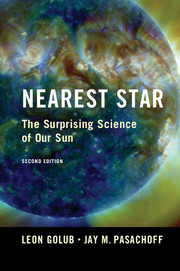8 - Space Weather
Published online by Cambridge University Press: 05 February 2014
Summary
Several of the earlier chapters in this book have mentioned how safe and sheltered we are, living on the surface of the Earth beneath a protective blanket of atmosphere and magnetic field. Conversely, when we venture outside of our safe haven, we step into hazardous territory. “Empty” space is actually far from empty: it is filled with high-energy particles and radiation, bullets of matter shooting in all directions, clouds of hot plasma thrown out by the Sun, and extremes of heat and cold (simultaneously). Not all of the hazards come from the Sun: on February 15, 2013, a meteoroid – a rock from elsewhere in the solar system – exploded in our upper atmosphere and sent shock waves across central Russia so strongly that 4000 windows were blown out, injuring over 1000 people with the fragments of glass and otherwise. Many thousands of smaller objects hit the Earth every day, but again our atmosphere protects us from all but the largest ones.
The Sun is one of the major sources of energetic particles and radiation which affect the Earth. The solar corona, even when it is not producing a major eruption, is so hot that the enormous gravitational pull of the Sun cannot completely contain it. The result is an expansion of its million-degree plasma into interplanetary space to form a “solar wind,” which roars outward at supersonic speeds of hundreds of miles per second. Rapid, intense explosions in coronal active regions, known as “solar flares,” produce bursts of x-rays, gamma rays, and high-energy particles at the Earth.
- Type
- Chapter
- Information
- Nearest StarThe Surprising Science of our Sun, pp. 247 - 270Publisher: Cambridge University PressPrint publication year: 2014



